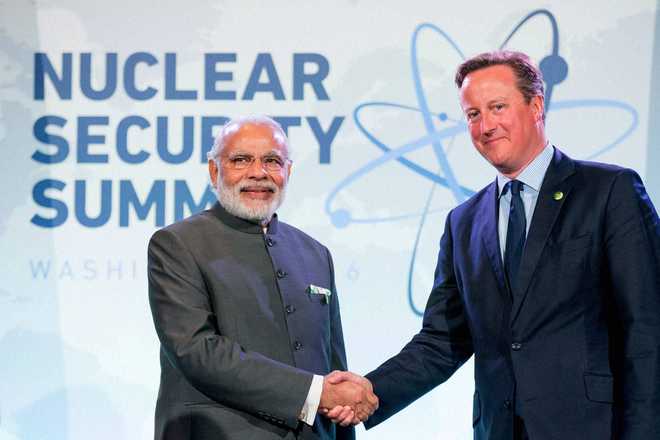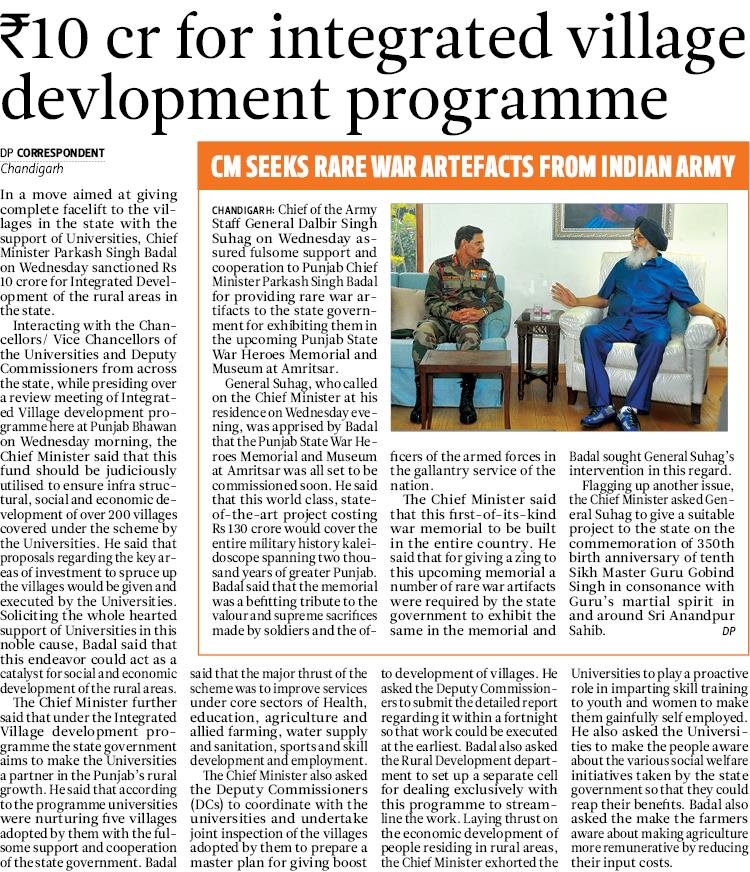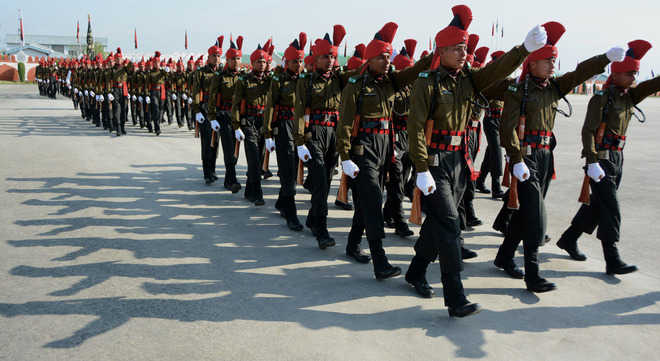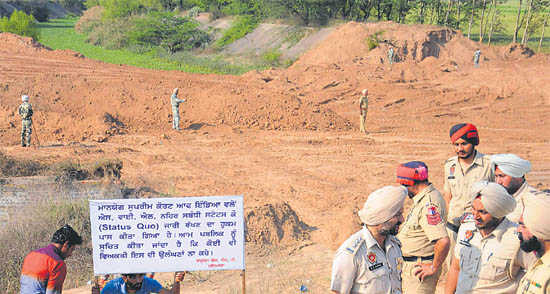
Prime Minister Narendra Modi shakes hands with British Prime Minister David Cameron before a meeting at the Nuclear Security Summit at the Walter E. Washington Convention Center in Washington on April 1, 2016.— AP/PTI
Washington, April 2
Prime Minister Narendra Modi met his British counterpart David Cameron here on the sidelines of Nuclear Security Summit (NSS), during which the two leaders discussed defence co-operation and Make in India issues.
“My meeting with PM David Cameron focused on defence cooperation, make in India and other key issues,” Modi said in a tweet before he left for Saudi Arabia after two days of engagement with world leaders during the NSS here.
Briefing reporters, the Ministry of External Affairs spokesman Vikas Swarup said during the meeting yesterday both leaders recalled Modi’s visit to London last year, during which India and the UK had signed deals worth 9-billion pounds and inked a civil nuclear pact.
Modi said that ties between the two countries had become “richer and deeper”.
Defence cooperation came up for discussion and Prime Minister Modi mentioned that Britain could be a partner in the ‘Make in India’ initiative, especially in the defence sector.
Visa issues also came up for discussion, Swarup said.
Both the leaders also reviewed the decisions that had been taken during Modi’s visit to Britain last year in particular the decision to launch rupee bonds at the London Stock Exchange.
Cameron expressed happiness that it was proceeding very well.
“He also said that we need to increase our partnership in defence. Prime Minister said that high-tech defence production has now been opened up to 100 per cent FDI, India had skilled manpower, cheap labour was also available and as such UK can become very important partner in the Make in India initiative particularly in the defence sector,” Swarup said.
The two leaders discussed some of the other pending issues between them including terrorism.
“Prime Minister also raised the issue of Tier II visas for IT companies. He said skilled professionals should not find it difficult to come to work in the UK. And, in this context the recommendations made by the migration advisory committee could caste a negative light,” Swarup said.
“Cameron promised to take a look at it. He said we do not want to disadvantage bonafide IT companies, but at the same time we would also want to ensure that the UK system is not misused,” the spokesman said. — PTI

































































